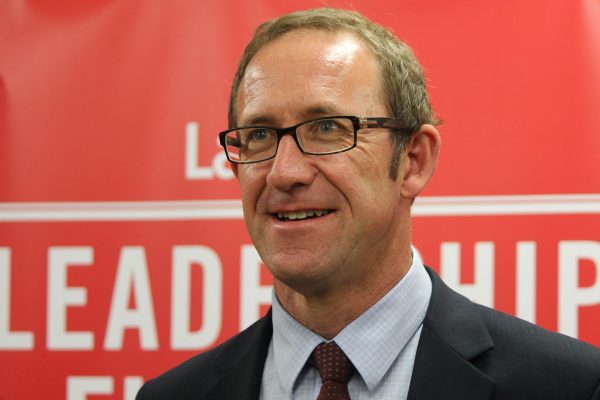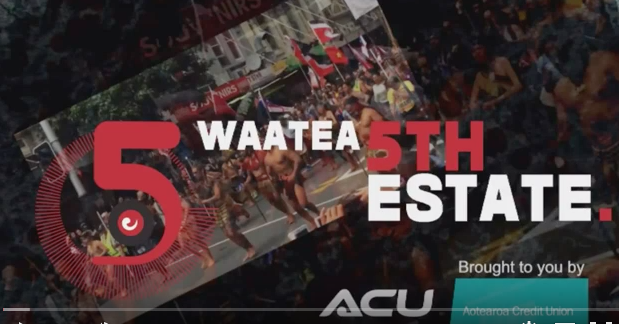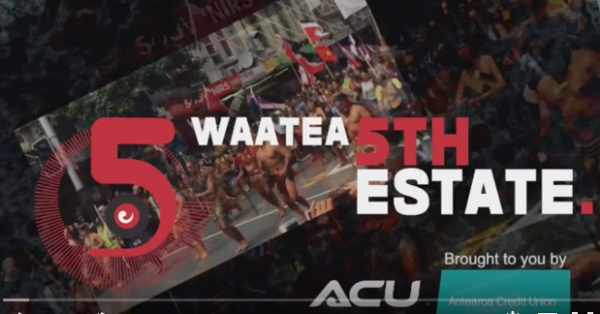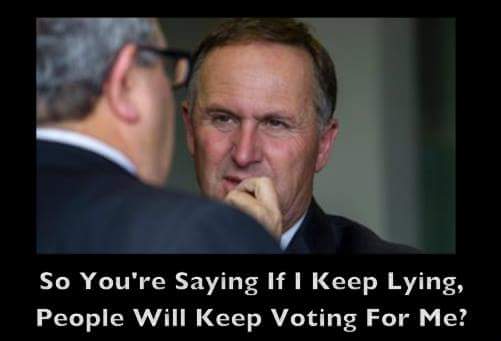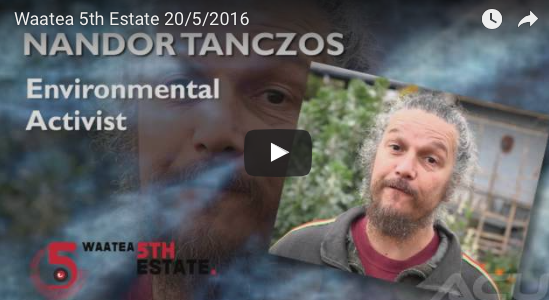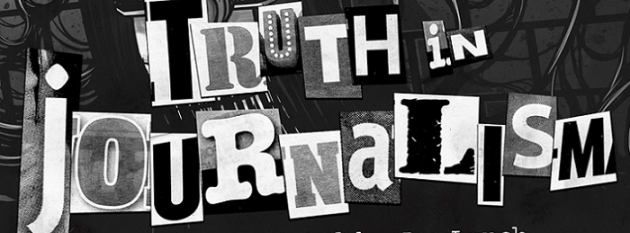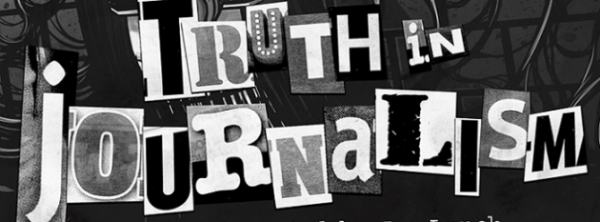 Introduction
Introduction
In July 2015 an official media release from the Justice Department announced that Sir Michael Cullen and Dame Patsy Reddy would head a review into NZ spy organisations. At the end of February 2016, the report of the two patsies was made public. It is expected that new legislation for the Government Communications Security Bureau (GCSB), and the Security Intelligence Service (SIS), will be introduced in July or August 2016, and it is certain that the legislation will give even more powers to the spooks.
The Cullen-Reddy Review gives us a strong indication of some of the likely new elements of new bills, and the opposition to extension of State covert power needs to prepare immediately to prevent further demolition of the rights to privacy, liberty and morally decent public policy making. For the Anti-Bases Campaign, public attention must continue to focus on the SIS and GCSB and the urgency of closing them down, separating New Zealand from the iniquitous Five Eyes hegemony. The fundamental problems that are intrinsic to the very existence of the surveillance agencies cannot be properly managed. The agencies must be replaced by properly publicly controlled institutions.
However, the carefully manipulated restrictive parameters of the Intelligence Review eschewed any discussion of closure. And the very few references in the Review to these broader considerations reflect the bias in the assumptions of the reviewers. Cullen and Reddy were in the classic position of not being able to see the forest for the trees and so, a critique of their report must focus heavily on the management of the trees rather than the threats to the forest.
So the following analysis of the Intelligence Review report is somewhat schizoid; while looking at the nuts and bolts recommendations made, the hidden infestation of the Five Eyes termites and the questionable rationale for the existence of the two agencies must be kept firmly in mind. It should also be remembered the many of the system’s most incisive critics refused to make submissions to a Review which they saw as bent, making it easier for the Establishment to proceed with its agenda, and giving the recommendations more weight than they should have.
Bias And Establishment Views
The Review is based on a set of Establishment assumptions which seriously prejudice the conclusions. Furthermore, a close examination of some of the statements made shows how these assumptions enable the report to dismiss fundamental critical points submitters made without proper consideration. The reviewers were clearly more enthusiastic about taking the spooks’ word for their good behaviour than seriously considering the actual history: “It was clear to us…. that (GCSB) restrictions are interpreted and applied conservatively” (p43), while critics have a “lack of awareness” about the agencies’ activities.
While: “There have been examples in some countries in the past of intelligence and security agencies over-collecting information when they are not adequately controlled by the Executive …” (p52) of course it has never happened in this country and Cullen/Reddy pretend it never will under the right and proper oversight regime they recommend. But examining the construction of the above sentence demonstrates the subtle approach to whitewashing opposition: “some countries”, “in the past” not “adequately controlled” – we can expect much better from a report that pretends objectivity.
Crucial matters of debate become assumptions: “Our Review suggests New Zealand does face a range of threats, many of which are not disclosed to the public” (p21). Why are these “threats” not disclosed to the public? Perhaps, because many examples given are “hypothetical”; or have occurred “in New Zealand or overseas”. There is little quantification of the “threats”. “A number of New Zealanders are already known to be fighting with or otherwise supporting ISIL” (the report quotes from the SIS Annual Report of June 30, 2015). Generalisations like “New Zealand is not immune from violent extremism” (p27) stem from bias, not data. We deserve better (emphasis added.
Unfortunately for the reviewers, polls they found failed to demonstrate any great public anxiety about terrorist threats, whereas a 2014 survey found 52% of the population expressed concern about Government surveillance. The bias of the report can be seen in an effort to portray a tiny increase in public concern over terrorism (much less than the margin of error) as indicating growing worries on the issue, and belittling those concerned because some were unable to actually name the arcane organisations that make up our spook system (p17).
The Review does list the threats enumerated in a briefing to an incoming Minister (p37): rise in violent extremism, loss of information data by NZ companies, hostile intelligence operations in NZ, drug trafficking, money laundering, illegal immigrants, illegal fishing, and instability in the Pacific. It is hard to understand, if these are the key “threats” facing this country, how they are having a significant impact on the lives of New Zealanders and what justifies the responses requiring expensive, undemocratic, secret agencies. Furthermore, the Review tells us that more than 90% of intelligence comes from open sources (p45). The case for the continued existence of the agencies is hardly compelling.
Five Eyes? What’s That?
The Review was constructed in a way that allowed the reviewers to ignore the nasty system in which the GCSB is integrated, and on the all-important impact of Five Eyes on international politics, business and diplomacy there is a resounding silence. Except, of course, where the bias of the report brings in some perceived advantages of our participation in this monstrous system. It cannot be disputed that Five Eyes is “by far New Zealand’s most valuable intelligence arrangement” (p46) but in ignoring the effects of that arrangement Cullen and Reddy have done a serious disservice to this country.
Surely we could expect that the current investigation by the Inspector-General of Intelligence and Security (IG) into New Zealand connection’s with torture, renditions and drone attacks should have raised alarm bells. At the very least the reviewers should have known that NZ agencies were praised by the US National Security Agency for operations which led to Bangladeshi activists being tortured by their Government’s security forces.
We are entrenched in a system that has lied, manipulated, tortured. John Key recently sang the praises of James Clapper (Stuff Website, 15/3/16), the US spy boss who visited NZ and met the PM in March. Many US Congressmen and Senators demanded President Obama sack Clapper for lying about spying on US citizens, and in 2015 Clapper tried to squash accusations by 50 intelligence analysts at the Pentagon who supported a formal, written complaint sent to the Defense Department alleging that senior intelligence officers have insisted on changing ISIS reports to make them reflect more positively on US efforts in the region (see my article “Spooky Bits” elsewhere in this issue).
If “intelligence collection is only of value to the extent that it focuses on the issues most important to New Zealand” (p3) why are we spying on UN representatives, politicians from Costa Rica, people from Brazil, Vietnam, tiny Pacific Island nations etc, etc.? The operations of NZ spooks, especially the GCSB, cannot be separated from the operations of their masters. It is facile to follow up that the relevant Minister “should” formulate standard terms for international cooperation which are “to have regard to any risk of torture or capital punishment” (p59) with the comment that agencies may not be able to “guarantee the methods” used by foreign agencies but “should” ensure their own activities are “compliant with New Zealand law”. For a nation that prides itself on its international reputation, this is a serious lapse of morality.
But Cullen and Reddy were “satisfied’ with the benefits to NZ of international interaction, because “New Zealand simply cannot go it alone in this globalised world of transnational threats” (p58). Even leaving aside any discussion of what threats this country might face if we did not tug at the trouser legs of the Five Eyes bullies and involve ourselves in arcane conflicts on the other side of the world, it is barely conceivable (and glaringly exemplifies the bias of the report writers) to not note that we could easily identify a dozen nations similar to NZ in size and importance that have absolutely no recourse to a bunch of “protectors” like Five Eyes, yet seem to survive quite happily. The report correctly states that it would be “extremely expensive to create a wholly self-reliant intelligence community” but completely fails to raise any question of what we actually need for “security” and how so many other countries seem to manage without big brothers to save them.
Is Effective Oversight An Oxymoron?
Besides the monumental flaw of ignoring the Five Eyes role in NZ affairs, the Reddy/Cullen report demonstrates a blind belief in the efficacy of “oversight” that is alarming. Cullen learned nothing from his failure to oversee the illegal spying of the GCSB and apparently was unperturbed by revelations that the US Central Intelligence Agency spied on its own Senate oversight committee to derail a report on CIA torture or that the British hide personnel details to conceal involvement in bombings in Yemen. NZ spooks must be virgins in the Five Eyes brothel.
After noting that currently “… lack of clarity (in legislation) …makes it difficult to ensure compliance” (p1) and that “the secret nature of the agencies’ operations makes effective oversight much more difficult to achieve” (p53), the report goes on to outline a three tier system of warrants that is supposed to ensure transparency and legality. As we see below, the quid pro quo for the new “protection” is to allow the spooks much broader powers of surveillance.
The recommendations propose the agencies have to get a warrant for every activity with the level of authorisation dependent on the significance of the operations. Low level impact activity, for instance, following a “suspect” in public would require a warrant from the Minister. At a higher level, warrants would have to be approved by the Attorney-General and the most invasive operations would need approval from both the Attorney-General and a “Judicial Commissioner” who is, or was, a High Court judge. However, the latter could only check for “legality” and could not comment on democratic or moral issues.
One foresees endless argument about what should be warranted at what level, and whether spooks would bother going through the process on a tedious regular basis is arguable. It should be noted that in 2015, on at least one occasion, an SIS operation went ahead without a warrant, which it can do under current legislation, but the immediate urgency of threat which is a requirement of such an operation appears to have been absent. As the Review says, warrant investigations are only carried out on a spot check basis, and this could only become much more random under the proposed system of more warrants.
We should also hope that the hopeless confusion, perhaps deliberate, that accompanied the spooks’ inability to report the correct number of warrants in operation in 2014 is not typical of the system, because having to get a lot more warrants would then cause complete breakdown. And we are also asked to believe that the system is one where activities cannot be wilfully or accidentally concealed from oversight, and history is nor reassuring on that score.
The report notes that protection from spying on Kiwis is currently less comprehensive than before the 2013 GCSB Act. Section 14 (which is supposed to stop the spooks spying on Kiwis) has been weakened: “… the protection offered by Section 14 is not as comprehensive as is commonly understood”. Whereas before 2013 it applied to all GCSB activities, now for some activities such as cyber security or assistance to other agencies, restrictions to spying on Kiwis do not apply (p76).
The alarming Cullen/Reddy recommendation to further remove restrictions on the GCSB taking any action for the purpose of intercepting New Zealanders’ private communications when performing its functions depends on using warrants to control such activity. This proposal to scrap GCSB domestic snooping restrictions, in the reviewers’ own words: “…would mean that the GCSB would be able to collect information in a broader range of circumstances than it can currently’ (p90, emphasis added). Such an expansion of GCSB powers with oversight through more warrants is based on assumptions about the system that are more based on blind faith than historical reality.
In 2014 in Australia, the spooks’ Inspector-General had difficulty investigating serious allegations against an agency by an insider whistleblower because the unnamed Australian intelligence agency had “serious gaps” in record-keeping that impeded the investigation of the serious allegations from the whistleblower. Rebecca Kitteridge, currently Director of the SIS, said that while writing her report on the SIS, prior to becoming its head, she had trouble accessing basic files.
Some recommendations that Reddy and Cullen make are positive. “The current restrictions on the IG’s ability to inquire into operationally sensitive matters should … be removed” (p10). They propose clarification of legislation to make clear that the Minister does not control the Inspector-General’s work list. There is, similarly, merit in broadening the category of persons who can complain to the IG, expanding the number of members on the Intelligence and Security Committee (ISC) and the number of ex-judges or High Court judges who would check the issue of warrants. However, their assumption that oversight can work effectively indicates a vast gulf between believers and critics in this area.
Weakening Of Democracy
The report refuses to accept that the ISC should be remodelled as a Select Committee and continues to leave far too much power in the hands of Ministers. For example, the Review appears to support the current position that intelligence data can be provided to any person authorised by the Minister to receive it (p6). Cullen and Reddy should have been made aware by Crusher Collins’ leaking of data to scurrilous Websites, and the use of information about then Opposition Leader Phil Goff by the Prime Minister’s Department in the run-up to the 2011 election, that it is too easy for information from the spooks to become political fodder.
Worse, recommendations from the reviewers support the idea that advancing NZ “economic interests” and “international interests” are valid objectives for surveillance agencies, although they say these objectives should relate to foreigners. But this justifies usages such as the GCSB spying on representatives of governments such as South Korea and Brazil, and a number of others who had rivals contesting Tim Groser’s failed attempt to become head of the World Trade Organisation (WTO). Spying on political opponents of the Government who espouse radically different ideas of how the NZ economy should be run is okay if some “foreign” connection can be alleged, and the Ahmed Zaoui fiasco gives little confidence that this would be handled properly.
Generally, protection of activists dependent on promises not to spy on “legitimate protest”, are hollow and unworkable. The blocking of an Auckland motorway by protestors is clearly not legal and opens those involved – and all their friends and relatives via metadata – to be put under surveillance. Which brings us back to the point that such matters should be in the hands of the Police, not the spooks because, as the “Urewera terriorists” episode showed, no matter how badly the Police behave, the activity comes to the attention of the public and the courts, unlike the activities of the spies.
There is little in the report that questions the trend (endemic in the spy world as Edward Snowden demonstrated) for spy agencies to infest communication systems and erode any privacy in communication. As is noted: since 2013 “network operators are legally required to ensure their services or networks have interception capability …and are required to assist where there is authorisation” (p42). Recently Apple took a stand in refusing to allow the US Federal Bureau of Investigation access to its phones; Microsoft has begun court action to be allowed to inform its customers that they are under surveillance.
But the issue of widespread intrusion into New Zealand’s communications networks was not raised in the Review. In fact, the report supports the obfuscation promulgated by the Prime Minister (and the mantra of Five Eyes) that mass surveillance does not take place because the spooks’ focus is on intercepted communications “actually selected and examined” (p42). This is an evasion. We have mass collection. As the Review acknowledges; “metadata is an important tool for the SIS” (p38). The reviewers seem to have taken at face value the spies’ assurances that only a small proportion of immediately relevant data is used, and other collected material disposed of.
But as reported in my “Spooky Bits” article (elsewhere in this issue), a review of the SIS by the Inspector-General of Intelligence and Security has noted a number of “shortcomings” in SIS processes. Fairfax Media (7/4/16) reported that: “Serious concerns have been raised about how the country’s spies treat Kiwis’ private information”. Although this related to SIS vetting practices and not more general collection issues, it is hard to believe that agencies are going to junk anything which exhibits the slightest possibility that it might potentially be useful. We continue to have the major problem of data storage by Five Eyes accomplices and it is hard to believe that any law requiring warrants, as proposed by the Review, will ensure NZ spooks don’t access data on Kiwis in the Big Brother system.
The Review does report that there is a problem with “incidental collection” because under current law the spies do not break the law if information relating to New Zealanders is gathered unintentionally while collecting for other intelligence purposes. Grounds for retention of this illegally collected data are said to be “quite broad” with wide exceptions allowing data to be kept. The reviewers were told by the spooks that such collection does not happen, but recommended legislation be rewritten to clarify the situation, and that a warrant be necessary to analyse it.
The Review in terms of data storage was extremely superficial at best. Reading the report, it seems our NZ spies are the only idealists in a Five Eyes mob where every other gangster grabs more information than they could ever process (Australia is going ahead with a Bill to keep all data for two years) and each in the last few years has built a massive secret data storage facility; the American spies’ storage facility in Utah reportedly has the capacity to store the complete set of human knowledge.
The Battle Ahead
As of May 2016, it seems likely that the Government will produce a new set of spy laws in July or August. The powers of the spooks will almost certainly be enhanced. Below is attached a list of key recommendations made by Cullen and Reddy, which may or may not be picked up by those promoting new legislation. Unfortunately, the recommendations that should have been made, but were in many cases not even considered, are many. Chief amongst these is that the report did not recommend, or even consider, the abolition of the GCSB and the SIS and the placing of their functions in the hands of transparent agencies, although they noted that a number of submissions made this proposal.
To sum up, the Review has produced the report that many cynics foretold – long on detail and short on analysis that puts the spook agencies into proper perspective and allows a full analysis of their relevance and place in a fully democratic and human rights-aware society. Nothing in the report gives any grounds for abandoning the contention that both the GCSB and the SIS should be closed down. Unfortunately the Establishment believers continue to give unwarranted deference to the forces of power politics and political chicanery; the testament of the heretics remains unheard. So 2016 will again need those committed to human rights and democracy in this country to take up the fight against the legislative machine and endeavour to publicise, and even slow, the ever expanding invasions into our privacy and our democratic process.
Some Key Recommendations From The Review:
“Every action ‘should be done with integrity and in accordance with the law’” (!!!)
Removing the GCSB distinction between international and domestic spying: “would mean that that the GCSB would be able to collect info about New Zealanders in a broader range of circumstances than it can currently”
Remove the restrictions on GCSB taking any action for the purpose of intercepting New Zealanders’ private communications when performing its functions (sect 14 of GCSB Act)
Remove or rewrite Sect 14 – needs clarification where data on Kiwis is “accidentally” collected which is not illegal at the moment and grounds for retention are “quite broad”
Give authorisation for every activity through a new three tier warrant system
Have a National Intelligence and Security Advisor to PM who would coordinate all the intelligence groups like the Canadian system does
The Inspector-General should be appointed for five years and (a) be funded separately from the intelligence budget, (b) be appointed by the Governor-General on the recommendation of the House of Representatives; (c) present his or her findings to the ISC (but on approval of the Minister); (d) take complaints from Kiwis about the agencies
Both GCSB and SIS have objectives which include protection of NZ’s “economic security” and “economic wellbeing”
Clarify in legislation that the “protected disclosures act” applies to the GCSB and SIS
Both agencies (not just GCSB) should be under State Sector Act (with “appropriate exemptions”), so that standards of conduct are set by the State Services Commissioner (SSC).
Directors should be appointed by the SSC – not the PM
There should be more secondments to move spooks and other Government officials around to experience various aspects of the different areas of work
A MARRIAGE MADE IN HELL
What Would They Call It? The GCSIS?
– Murray Horton
Warren’s above article deals, in great detail, with the recommendations of the Independent Review conducted by the two patsies, as he so memorably labelled Sir Michael Cullen and Dame Patsy Reddy (who has since been named as the next Governor-General). But it is also worth noting what the Review didn’t recommend but which Cullen made very clear that they would have, if it had been in the terms of reference. Namely: a merger between the GCSB and SIS into one spy agency, covering both internal and external spying.
“It’s the merger you have when you are barred from recommending a merger. Or as the co-author of the Intelligence and Security review, Sir Michael Cullen, put it, a civil union not a marriage. The law changes Cullen and Dame Patsy Reddy have recommended formally break down the distinction that still exists in many Kiwi minds between the externally focused GCSB – with restrictions on spying on Kiwis – and the SIS.
“That distinction (between internal and external surveillance) had gone in theory in 2014 under the intention of Parliament’s law change (made after the Kim Dotcom fiasco). But, as the reviewers pointed out, in practice it left the electronic spooks in limbo, untrusting of the law change and unwilling to use it. In essence the recommended change would remove the restriction on the GCSB intercepting New Zealanders’ private communications when it was performing its intelligence functions, under a warrant it could raise in its own right.
“It was, they argued, a statement of the reality that it was about different ‘kit’ not different functions: ‘The SIS basically has the old fashioned tools, and GCSB has the modern tools’. The proposed changes would leave the two organisations with the same powers, authorisation regimes, capacities, purposes and oversight – operating under the same legal structures and operating from the same building – hence Cullen’s ‘civil union’ quip.
“They were now basically in the same area of activity and would increasingly be so, as technology advanced. If the reviewers had been allowed to recommend a merger they would have done so – and as far as they are concerned the next review in five to seven years will likely go that way. The changes would also, if you accepted the review team’s argument, prevent unnecessary and costly replication. Without the GCSB’s technical powers available to them, there would be every incentive for the Police and the SIS to build ‘mini-GCSBs’ of their own.
“Oddly, Prime Minister John Key seemed to have a completely different take shortly after the report was made public. He said in principle the Government wanted to keep the domestic/overseas roles of the two agencies separate except in ‘some very unique circumstances in relation to national security’, which would be ‘a tiny subset’ of what GCSB was doing. And the GCSB and SIS would have different powers, though they would operate under the same definitions for things like terrorism. ‘In the end the powers would still be pretty different’, Key said” (Press, 10/3/16, “Spies May Cohabit, But Not Hook Up”, Vernon Small, http://www.stuff.co.nz/national/politics/opinion/77697925/Spy-agency-review-calls-for-Civil-Union-between-SIS-and-GCSB).
As the Press article says, the next such review is scheduled to take place in five to seven years. You can put money on the propaganda being ramped up in the next few years to accept the “inevitability” of a merged GCSB & SIS into one spy super-agency. This really does represent the drive to create an Orwellian Big Brother society in little old New Zealand. It’s a dangerous trend and one which needs to be both monitored closely, and strongly resisted.
TDB Recommends NewzEngine.com



